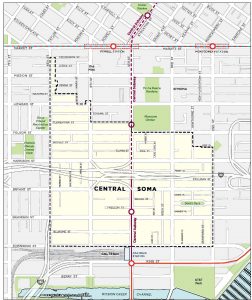Authored by Lindsay Gehman; Originally published in The Daily Journal, May 24, 2018.
Advertisers continue to utilize influencer marketing as an effective means of connecting with their target consumers and achieving a high ROI. As such, it is imperative that advertisers and influencers enter into written agreements at the outset in order to ensure an effective campaign and a mutually beneficial relationship between the parties. Written influencer agreements allow the advertiser and influencer to get on the same page about expectations and risk allocation in order to help prevent future disputes.
Here are five essential provisions of every influencer agreement, which are drafted from the perspective of the advertiser/agency. Another key consideration when drafting influencer agreements from the agency’s perspective is to ensure that the influencer agreement (just like any other vendor agreement) ladders up to the agreement between the agency and its client, the advertiser, as tightly as possible.
Content Ownership and Rights
It is imperative to specify who owns the content created by the influencer. If the influencer retains ownership and the advertiser only receives a license to use such content, the scope of such license should be drafted as broadly as possible, both in terms of what the advertiser may do with the content (i.e., repost, create derivative works, etc.) and the type of media it covers (i.e., the advertiser’s website and social channels, broadcasts, publications, etc.). In connection with these rights, the influencer should also provide a license to use his or her name, blog name or social media handle, likeness, voice, image and testimonials to the advertiser in connection with the use of the content.
Exclusivity
In some cases, advertisers expect that they will be the only brand featured in the content they are asking the influencer to create. Accordingly, the influencer agreement should include a clause that prohibits the influencer from monetizing the content in any way without the advertiser’s consent. In addition, advertisers oftentimes expect that the influencer will not work with a competitor of the advertiser during the campaign and sometimes for some period thereafter. In such cases, the influencer agreement should include an exclusivity provision that lists the competitors that are off limits as well as the term of the restriction.
Termination
Because digital campaigns are fluid and can change on a dime, advertisers typically require broad termination rights that allow them to terminate the influencer agreement without cause on little to no advance notice. On the flip side, since influencers are typically selected for their unique expertise or influence (and are therefore difficult to replace), advertisers seek to limit the influencer’s ability to terminate without cause. In terms of what the influencer must be paid in the event of early termination, advertisers typically push for paying only for deliverables that have been accepted prior to the termination date.
Regardless of where the termination notice period nets out, advertisers should include a morals clause that allows them to terminate the influencer agreement immediately in the event the influencer violates any law or if the influencer’s conduct violates generally acceptable standards of behavior such that the advertiser’s association with the influencer could damage the advertiser’s reputation. Related to this, a clause that requires the influencer to take down any content featuring the advertiser from the influencer’s website or social channels upon the advertiser’s request should be included.
Representations, Warranties, Covenantsand Indemnification
In addition to standard representations, warranties and covenants like authority and no conflict, advertisers will also want influencers to represent, warrant and covenant that the influencer has obtained all rights and licenses necessary for the advertiser to use the content, that the content will not infringe or violate any intellectual property rights and that the content will comply with all applicable laws, rules and regulations, including the Federal Trade Commission’s then current Guides Concerning the Use of Endorsements and Testimonials in Advertising and the applicable social media platform’s terms of service.
Advertisers will also expect the influencer to indemnify the advertiser in certain instances, including if the influencer breaches the agreement or if the influencer acts in a negligent or willful fashion.
Social Media Policy
To the extent the advertiser has its own Social Media Policy – which every advertiser should – that Social Media Policy should be attached to the influencer agreement as an exhibit, and the influencer should be required to comply with the policy. Social media policies typically include practical guidance around disclosures, the editorial process and other “best practices” that the influencer should follow.
